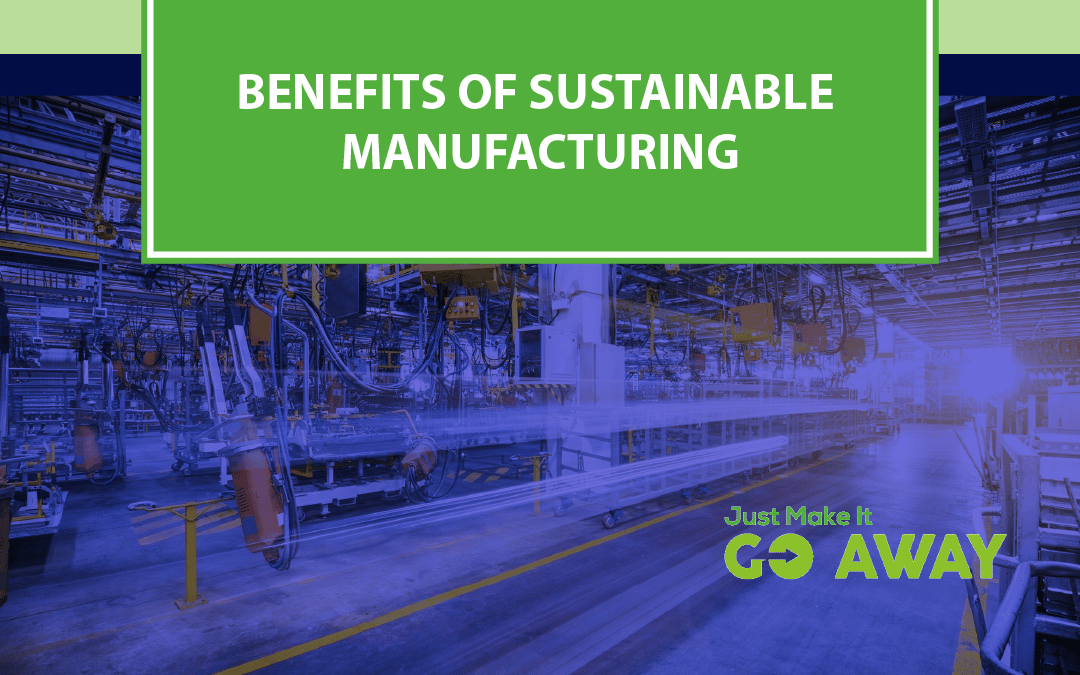What is Sustainable Manufacturing?
According to the EPA, sustainable manufacturing is “… the creation of manufactured products through economically-sound processes that minimize negative environmental impacts while conserving energy and natural resources.” Essentially, it is a way of making consumer goods in a way that is environmentally, economically, and socially sustainable. By implementing these processes, manufacturers use just what is needed, conserve as much as they can, and waste as little as possible.
Why Is Sustainable Manufacturing Important?
As the human population increases and technology advances, the demand for consumer goods is growing. This comes with consequences: greenhouse gas (GHG) emissions are rising. In 2020, the industrial sector contributed 24% of US GHG emissions, largely from energy and production byproducts. Sustainable manufacturing is part of the solution to climate change that is better for the planet, the people, and the economy.
Environmentally Conscious Consumers on the Rise
Consumer demand also supports environmentally and socially sustainable manufacturing. In a recent study, researchers found that half of the consumers are willing to pay more for a sustainable brand or products, and 49% claim they’ve spent more on environmentally or socially sustainable purchases. Of those surveyed, three of five consumers say that at least half of their last purchase was on environmentally or socially responsible goods. By implementing more economically sound production processes that attract environmentally-conscious consumers, companies help:
- Conserve energy and natural resources
- Reduce their environmental impact
- Improve their environmental performance
- Gain a competitive advantage in the market
Sustainable practices are a large part of the popularity and success of sustainable brands and have huge environmental benefits, as well as supporting the employee community.
How Can We Practice Sustainable Manufacturing?
Making an industrial system more sustainable can streamline production processes and supply chains, reducing waste, reducing costs, improving energy efficiency, and conserving energy and natural resources. An excellent place to start is by looking at the entire production process, from the earth to the landfill.
Sourcing
There are a variety of options to source sustainably. Sourcing raw materials locally, rather than from further away, emits fewer GHG emissions and benefits the local economy. Alternatively, companies can use recycled materials instead of new ones, reducing the energy needed to create new products. For example, Nimble for Good, a tech accessory company that makes their products from hemp, recycled aluminum, plastics, glass, silicone, and paper, have a minimum of 72% recycled material content, diverting approximately 90,000 pounds of waste from landfills in 2021!
Manufacturing Processes
In the production of goods, companies should assess and track data on the waste produced during manufacturing. There are different manufacturing methods that have advantageous for different types of products. For example, subtractive manufacturing makes sense for products with geometrical, uniformly-cut parts processes. Alternatively, the benefits of additive manufacturing are more robust when a product has several small non-uniform pieces of raw material. Choosing the most strategic manufacturing process reduces material waste and costs, streamlines production, and can reduce labor costs. Learn more about ESG best practices and how it can help your company. It is important for businesses to have a return policy in place, there can be many advantages and disadvantages of reverse logistics.
Energy
In terms of increasing energy efficiency, companies should start by establishing a baseline of energy consumption to track and analyze data. Then, assess the data to find patterns and areas where energy can be saved. For example, if energy is continuously used to light a little-used space in a building but cannot be turned off automatically, installing motion-sensor lights would reduce energy usage. Energy-efficient equipment used in the industry also saves essential time, cost, and space.
End-of-life
Finally, optimizing reverse logistics services or management of what happens to goods after they are sold to customers can be made more sustainable. Most of the world runs on a linear economy, rather than a circular economy, where unwanted materials are used to create new products. However, manufacturing from recycled materials, and creating repair, recycling, and resell programs reduces the amount of waste going to landfills and raw materials needed for new products. Patagonia runs a successful repair and resale program, Patagonia Worn Wear, encouraging customers to fix damaged goods and purchase used gear. Other companies have take-back recycling programs, and others such as Just Make It Go Away resell goods to prolong their life and divert waste from landfills!
Green Your Company
These options may seem overwhelming, and most changes toward sustainability take time. Start by assessing your business, then create a long-term plan. One easy step you can add is to reduce waste through our services to responsibly recycle and resell your overstock, waste products, and more!
What is one goal your company can set for the future, and what can your business do for the earth today?


